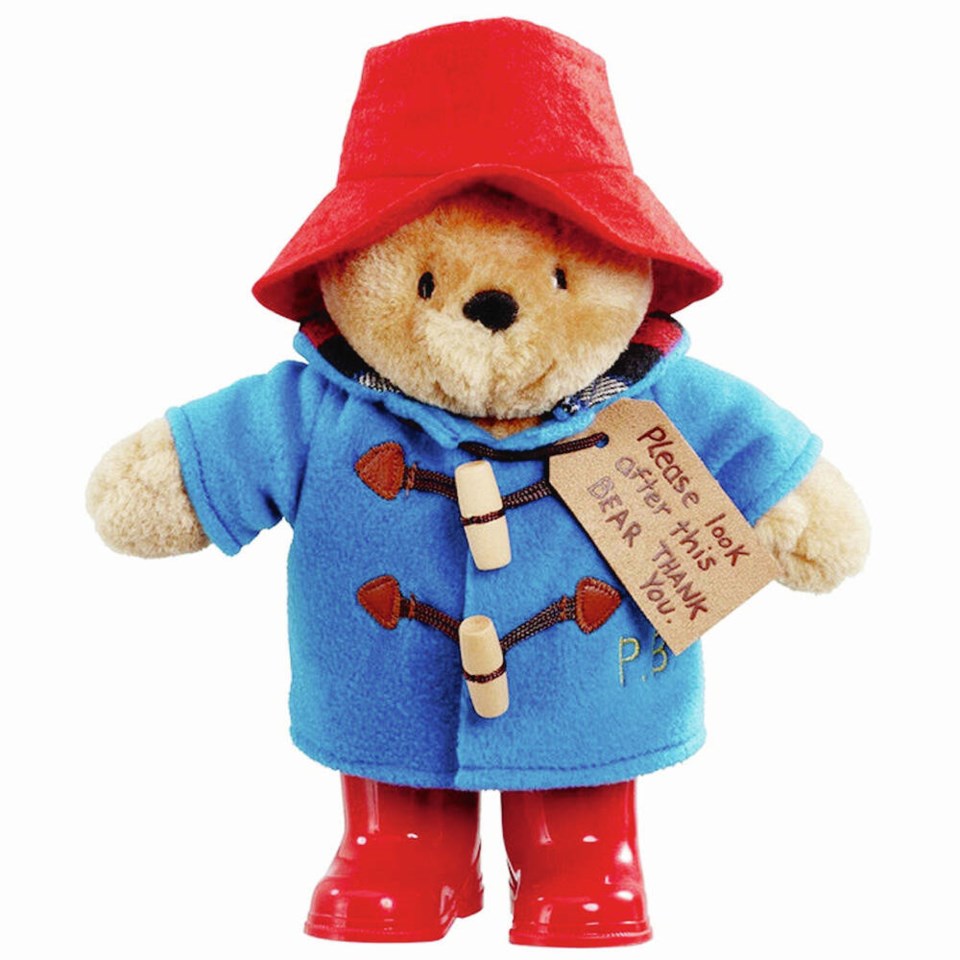Ruby Attwood is blue.
“I’ve lost my Paddington Bear,” the 92-year-old says.
It happened last month, when Ruby was in Royal Jubilee Hospital. The Victoria woman’s family took the opportunity to de-clutter her apartment, which was great, except one of the items hauled off to Value Village was Paddington.
For those unfamiliar with Paddington, he’s a teddy bear-like character from a children’s book. Decked out in a duffel coat and bucket hat, he inhabits a special place for those who grew up in Britain, as Ruby did. She still has a photo of herself as a girl, selling fish with her Gaelic-speaking grandmother in Peterhead, a port way up in the northeast of Scotland.
Ruby bought Paddington in Victoria more than 20 years ago, back when she and husband Bill were still snowbirding here from Ontario each winter.
She saw the bear — a talking version that would say things like “Would you like to play with me?” — just as a merchant was putting it in the window of his Johnson Street shop.
When the Attwoods decided to make their move to Victoria permanent, boarding the westbound train with a single suitcase apiece, Paddington was one of the precious items stowed in their luggage.
Ruby lives alone in Rose Manor now. Bill, who has Alzheimer’s, is in long-term care in Mount St. Mary’s Hospital. She crosses the street to see him every day, taking a COVID test before entry. He turned 93 on Saturday.
It would be nice to have her Paddington to return home to, but getting him back is a long shot. By the time she contacted Value Village after getting out of hospital, the bear was long gone. “I’m kind of broken-hearted,” she says.
Maybe it will turn up again. Thrift store finds have a way of showing up in surprising places.
A Nanaimo woman recently bought a secondhand skirt in which she found a flash drive tucked inside a tiny hidden pocket. Imagine her goosebumps when she plugged it in, only to discover old photos of herself and other family members. It turns out the skirt she bought in the mid-Island is one that had been owned by her mother in Victoria 15 years previously.
Last year, Qualicum Beach’s Amanda Maillett found a retired Nova Scotia veteran’s military memorabilia inside a board game that she had purchased at the Victoria Value Village. With the help of social media, she returned it to him.
Why go to the trouble of tracking him down? Because it appeared likely that the mementos had been donated in error, and that they held meaning to whoever had saved them in the first place.
It’s the meaning behind certain objects — the way they carry echoes of a time, or a place, or a person — that matters. The meaning of things is why grieving families might not squabble about who inherits grandma’s bank account, but will fight bitterly over her old butter dish.
It’s why half a dozen sanitation workers gathered one evening to help a Staten Island woman pick through the contents of a garbage truck, all eight tonnes of it, until they found the wedding ring she accidentally discarded after taking it off while making meatloaf.
Thrift stores usually do their best when panicked people rush in looking to retrieve items donated in error. Value Village’s Sara Gaugl says the chain has an effective system for tracking such goods. “In fact, our Victoria store has had two success stories this week alone — a mis-donated scuba mask and an Xbox console.”
It can be a challenge, though. A Salvation Army manager once described the difficulty of needle-in-a-haystacking through a Victoria warehouse that processed five tonnes of donations each day: “Can you describe the black plastic garbage bag?” “Yes, it was black and plastic.”
If Paddington Bear doesn’t come back, well, at least he’s used to wandering. His name comes from London’s Paddington railway station, where the character in the 1958 children’s book was discovered sitting on a suitcase, a note reading “Please look after this bear” attached to his coat.
Author Michael Bond was quoted as saying he drew inspiration for his creation, a well-mannered but vulnerable arrival from “darkest Peru,” from his memories of children at British railway stations just before and during the Second World War — young Jewish refugees whose families sent them across the English Channel in advance of the Holocaust, and little Londoners waiting to board trains to the safety of the countryside, away from the Blitz.
The evacuees carried little suitcases and had notes pinned to their jackets, just like Paddington.
Of course, Ruby Attwood would prefer that her bear just came home.
>>> To comment on this article, write a letter to the editor: [email protected]



